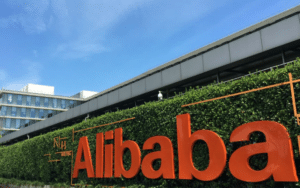The nickel market is currently facing a significant challenge due to an oversupply of this vital ingredient used in electric vehicle (EV) batteries. This oversupply has resulted in a sharp decline in prices over the past year, causing concern for major mining companies such as BHP Group, the world’s largest miner.
In response to the industry downturn, BHP Group has indicated that it will reassess its nickel business strategy to navigate through this challenging period. The company is considering options that include potential write-downs of its nickel assets, which include mines and a refinery located in Western Australia. BHP Group has already begun cutting spending at its operations, known as Nickel West, and is exploring additional measures to mitigate the impact of falling prices.
Acknowledging the structural changes taking place within the nickel industry, BHP Group recognizes the need to adapt to the evolving landscape. The demand for nickel, primarily driven by its use in stainless steel production, remains high. However, the growing demand for nickel in EV batteries has not kept pace with the surge in supply from countries like Indonesia. This discrepancy has contributed to the depreciation of nickel prices.
Not only is the nickel industry grappling with these challenges, but other commodities essential for the global energy transition are also experiencing a similar struggle. Prices of lithium and cobalt have slumped due to a plateau in EV sales growth in the United States. Albemarle, a lithium producer based in Charlotte, N.C., recently announced its plans to delay projects and reduce workforce to offset costs amid this downturn.
BHP Group’s assessment that the nickel market is undergoing structural changes implies that a swift recovery is unlikely in the near future. Consequently, other mining companies are taking similar steps, such as scaling back production and adjusting investments, in response to the persistently low prices.
The nickel industry must now navigate this challenging period of oversupply and low prices, relying on strategic adaptations and prudent decision-making to weather the storm. By reevaluating their business models, mining companies can turn this downturn into an opportunity for growth in a rapidly evolving global market.
Nickel Mining Challenges Continue in Western Australia
Earlier this week, Canada’s First Quantum Minerals announced the suspension of mining operations at its Ravensthorpe nickel mine in Australia. The company cited weak prices and high costs as the primary reasons for this decision. Similarly, Panoramic Resources, the administrators of the Savannah nickel operation, revealed their plans to suspend operations due to dimming hopes of a financial recovery. Another mining company, IGO, warned investors of a forthcoming write-down on its Cosmos nickel project.
The Western Australian nickel mining industry is facing tough competition from Indonesia, whose nickel output is traditionally produced at a lower cost. In 2022, Indonesia supplied approximately half of all nickel used in electric vehicle (EV) batteries, a significant increase compared to zero to 5% in 2017. According to CRU, a London-based commodities business intelligence firm, this figure is expected to surpass 80% by 2027.
The oversupply of nickel is having a profound impact on global markets, particularly on the London Metal Exchange. The benchmark nickel contract has plummeted from over $30,000 per metric ton at the beginning of last year to around $16,000 per ton presently.
BHP, a prominent mining company with numerous untapped nickel deposits, including those acquired through its takeover of OZ Minerals, reported a staggering 24% decrease in nickel prices during the six months leading up to December compared to the previous year.
Despite the challenging market conditions, BHP managed to increase its own nickel production by 4% during the same six-month period. The company maintains its production forecast for the year ending in June 2024, estimating between 77,000 to 87,000 tons of nickel.


